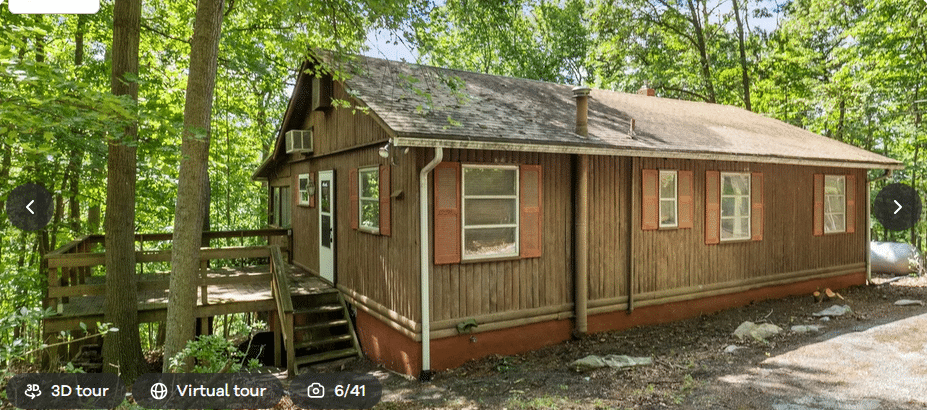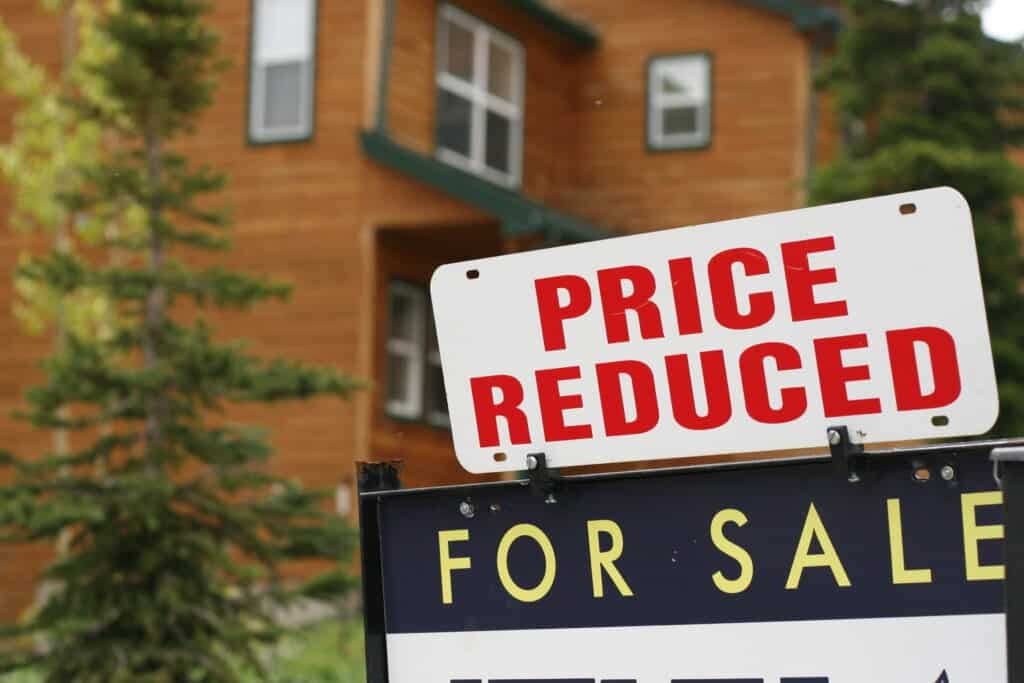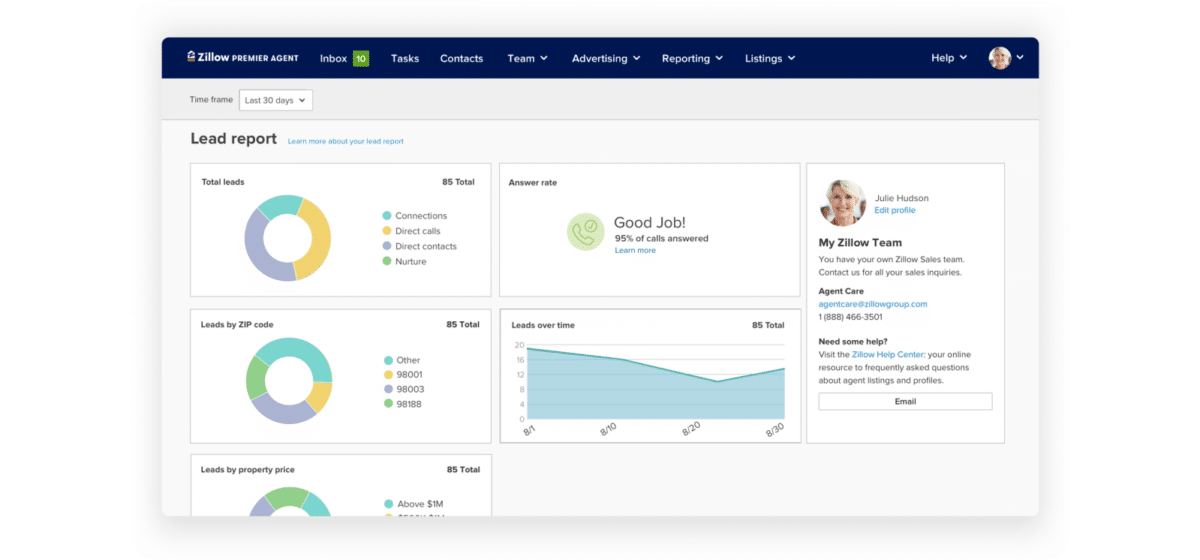Your buyer and seller will undoubtedly have questions regarding selling a house as-is. Selling an as-is property lets homeowners sell without ponying up extra time and cash for improvements or repairs. Plus, buyers can score some good deals by buying a distressed or as-is property. As their agent, you must also know how to protect your clients through the as-is selling process and understand the nuances such as navigating inspections and disclosures.
As an agent and homeowner, I represented myself during the sale of my as-is property five years ago, and I’m going to help you be prepared to answer “How do I sell my house as-is?” for your clients.
What Does It Mean to Sell a House As-is?
Selling a home “as-is” means that the seller plans to sell the house without making any repairs. In other words, “what you see is what you get.” Purchasing a house as-is implies that the buyer will acquire the property in its current condition, with no further repairs, cash concessions, or enhancements paid for by the seller. The buyer ultimately assumes all risks and responsibilities for any issues that may arise post-purchase.


Generally, properties advertised as-is are priced lower. The buyer is expected to shoulder additional renovations and improvement expenses once they become the official homeowners. Therefore, potential buyers should prepare for these extra costs.
Minimum Property Requirements (MPRs) When Selling an As-is Property
Minimum property requirements (MPRs) are criteria ensuring the property is structurally sound, safe, sanitary, and legally compliant. Each lender has its own MPR standards. Common MPRs include a functional heating system, a working roof, and a structure free from decay.
Notably, falling below MPR standards could be a deal breaker for some homebuyer programs, such as a Federal Housing Authority (FHA) loan or VA loan. However, buyers could consider a HUD 203(k) Rehabilitation Mortgage Insurance Program for properties that don’t meet the MPR. These programs have strict requirements, so do your research.
Reasons to Consider Selling a Property As-is
There are various reasons sellers will sell their home as is. It can be a homeselling myth that all as-is properties have significant defects. A seller also may sell a home as-is at full market value, even if the repairs are minor, if they’re underwater on their mortgage, or if it is a short sale. They simply don’t have the financial resources to pay for anything.
Below are some of the most common reasons real estate agents might want to consider selling their clients’ houses as-is:
- Insufficient finances: This is the most common reason sellers choose to sell their properties as-is. Home improvements and repairs can be expensive. Selling a house as-is allows the homeowner to avoid those costs.
- No time: Renovations can cause delays and may not add enough property value to justify the expense. So, if time is critical, it’s best to assist clients in selling their property as-is and avoid the added stress of renovations.
- Price reduction: A homeowner may need to sell as-is due to the listing price needing a reduction. Before dropping the price, figure out why the home isn’t selling.
- Lack of desire to do renovations: Your clients may not want to deal with the hassle of renovations.
- Convenience: If a home is inherited or needs to sell post-divorce, the seller might opt for an as-is sale, sidestepping the responsibility of preparing the house for the market.
- Inheritance: A seller who hasn’t lived in the house may list it as is because they don’t know the actual condition.
- Substandard conditions: When your client’s home is unlivable, selling as-is to a real estate investor may be the best option.
Pros & Cons of Selling a House As-is
Like any real estate transaction, selling a house that needs repairs has upsides and downsides. Some of its pros and cons are the following:
How to Sell a Home As-is as an Agent in 7 Steps
In learning how to sell a home as is, you must showcase everything, including the flaws. It doesn’t exempt you or the seller from disclosure of all material defects. From doing market research through closing, you must work diligently to get the most money for your clients, negotiate with buyers, and facilitate a smooth closing.
To learn how to sell a house as-is and market it successfully, follow these steps below:
Step 1: Do a Comparative Market Analysis (CMA)
As a real estate agent, you will help homeowners set a reasonable price by conducting a comparative market analysis (CMA) of similar recently sold homes in the area. As with any CMA, you’ll need to find properties within the same relative location, the same number of bedrooms and bathrooms, similar square footage, etc. However, pay particular attention to the homes you compare to your subject property; they might be in excellent condition, where your seller’s property needs work. You may need to make adjustments in your CMA for deferred maintenance.

Once you find a few homes to compare to the subject property, set a baseline and adjust your numbers as you uncover the defects. This process will help you arrive at a reasonable price and help you answer, “How do I sell my house as is?” for your seller clients.
Step 2: Facilitate a Thorough Home Inspection Before Listing
Securing a home inspection before listing and selling a property as-is is useful. This thorough examination involves checking the property’s condition, including structural, electrical, and plumbing systems and other issues that clients may not be aware of. It allows sellers and agents to disclose everything upfront, potentially speeding up the sale of your client’s home. A professional inspection typically costs $200 to $500, depending on the location, home type, and square footage.
Buyer agents should encourage their clients to get an inspection and not rely solely on the seller’s inspection report. The seller’s inspection is about disclosure, while the buyer’s inspection is to protect them from buying a property with repairs beyond their abilities and budget.
Suppose you are interested in pursuing a career as a home inspector. If so, check out our guide, How to Become a Home Inspector in 5 Easy Steps, which provides helpful information on how to get started.
Step 3: Get Cost Estimates for All Potential Repairs
Obtaining cost estimates from local contractors will give you better bargaining power if buyers try to haggle the as-is price (which they still may!) Share these estimates with the seller to see if it will net them more at closing to make some repairs.
Here are some examples of home repairs with their average costs:
Step 4: Set a Reasonable Price
Setting a fair and honest price that considers the property’s good and bad features is essential. Otherwise, you’ll get few showings. Proper pricing helps you market the property confidently to potential buyers while ensuring homeowners get the best deal. Use the comp data from your CMA, the list of defects, and cost estimates to determine the best price for the as-is property.

Example: A fair market value for a two-bed, two-bath home is $300,000. However, the roof needs $9,800 worth of repairs, and the electrical panel needs replacement for $3,000. Factor that into the cost by lowering the price by about $10,000-$13,000. While this is an oversimplification, the general concept should be used to calculate a fair price for an as-is property. You don’t have to deduct the entire repair cost but stay in the ballpark.
My Story
When I sold my home, I listed it at full market value but received a $30,000 below-asking price offer. I agreed to sell “as is” at that price, reminding the buyers of their inspection contingency if they wished to back out if they didn’t like my as-is terms. When the inspection revealed a $22,000 cost for a septic system replacement, the buyers backed out. We repaired the septic and eventually sold the property for the full price. Lesson learned: always consider repair costs when setting the selling price, especially with inspection contingencies in play.
Step 5: Disclose & List All Defects
Sellers and real estate agents must disclose all material defects, so they should provide a comprehensive seller’s disclosure report detailing all issues with the house, no matter how big or small. Staying proactive will help avoid potential legal problems if the buyer discovers undisclosed defects later and decides to withdraw from the deal or, worse, sue you and your client.

Step 6: Market the Property
Create a property description that highlights the positives of your listing but mentions that the sellers are selling “as is.” If there are significant repairs, such as a new roof, heating, or septic systems, include this. Choose real estate words to write a realistic yet optimistic description, targeting the right audience. Most often, people looking for as-is homes will be fix-and-flippers, investors, or individuals looking for a renovation project to call their own.

It goes without saying to use the Multiple Listing Service (MLS), Zillow, and Realtor.com to connect with potential buyers. But also, post your listings on social media platforms and send out targeted email marketing campaigns to your sphere of influence (SOI). Remember that although the home may seem like it may be in disrepair, it is someone’s dream home. The right price and marketing strategy will bring the perfect buyer for your as-is listing.

Zillow Premier Agent offers analytics and tracking tools to help you manage and optimize leads. The platform provides detailed reports on lead volume, response rates, and conversion metrics to see how well your advertising efforts are paying off. If you’re a team lead, ZPA’s performance analytics also track the team’s effectiveness, ensuring everyone contributes efficiently to your team’s overall success.
Step 7: Complete the Sales Process
When you find an interested buyer, the remaining process will be similar to a traditional sale: receive an offer, counteroffers (if applicable), negotiations, and closing. Remember: while the buyer can request an inspection, the sellers can reject any offer contingent on making repairs to the home, and the buyers can negotiate if this issue arises.
Tips for Real Estate Agents to Easily Market & Sell an As-is Property
After learning how to sell a house as-is, use these tips to help you easily market the as-is property. The following tips will help you make a smooth and successful sale:
- Tip 1: Be transparent about the home’s current condition. Clarify in the listing and any marketing materials that no repairs will be made or problems addressed. Putting this information in writing in the purchase and sale agreement is imperative. Additionally, disclosing inspection details establishes trust with potential buyers and makes the situation more appealing, which could result in a faster sale. Moreover, the inspection report can assist you in setting a fair price for the home.
- Tip 2: Remember to keep things clean and organized. While the sellers may not be inclined to invest in significant upgrades, that doesn’t mean they should disregard the importance of presenting the home in the best possible condition. This includes keeping the yard trimmed, surfaces clean, beds made, and dishes put away while minimizing clutter as much as possible. Always be prepared for viewings, as you would with any home sale.
- Tip 3: Know how low your client can go. Work out the lowest offer your client would accept in advance, and be prepared to counteroffer quickly if someone bids lower than that. Some buyers might still try to negotiate based on the home inspection results when you’re selling a house as-is. If repairs are needed and only a few hundred or thousand dollars are in the way of closing the deal, your client can either agree to do the repairs or reduce their asking price. This can make a solution that works for both parties.
Frequently Asked Questions (FAQs)
What does it mean to sell a house as-is?
When a property is listed for sale as-is, the seller sells the house in its current condition without any plans to perform any repairs. Even though the seller might offer concessions in closing costs to offset any flaws, it is improbable that they will undertake any home improvements.
Is it good to sell a house as-is?
Selling houses as-is can be an excellent choice if you do not want to spend time or money on repairs or upgrades. It appeals to buyers interested in properties needing fixing or investors looking for opportunities. However, selling houses as-is may result in a lower sale price. Consider the property’s condition, market demand, and financial objectives to determine if selling as-is suits your specific circumstances.
How does selling a house as-is affect its price?
If you plan to sell a property in its current condition, buyers typically anticipate paying a lower price if it requires repairs or renovations. To set the right price, consider a real estate CMA and professional inspection and estimate the cost of the necessary repairs. Based on this information, adjust the price to attract prospective buyers.
Final Thoughts
If your client asks, “How do I sell my house as-is?” and doesn’t have the funds or the time to invest in house renovations or does not want to deal with prolonged negotiations, you can use this information to help them. Nevertheless, this does not relieve you or the seller from the disclosure obligation. They must inform prospective buyers of any issues that may deter them from purchasing the property.
Have you sold a property as-is? We’d love to hear your story!










Add comment